To get stronger in the saddle, look no further than your… shoulders?
Cycling is obviously a lower body-dominant activity, but when we move, every part of the kinetic chain, from head to toe, is in on the action—and turns out, the joints at the top of your arms play an important role in powering your ride.
“Shoulder and thoracic spine mobility is important for cyclists because it will affect their posture—and that, in turn, will affect their lungs and breathing capacity,” explains Brian Gurney, a board-certified sports clinical specialist and physiotherpist at BeFit Therapy.
Yes, you’ll still be able to ride even if you have some immobility in the shoulders—but if you’re not breathing as well as you could be, you’re probably not riding as powerfully as you could be either.
A lack of mobility in the shoulders is very common for cyclists.
Plus, chances are, you have some amount of immobility in your shoulders. “A lack of mobility in this area is very common for cyclists since they’re spending so much time sitting on the bike and in a forward, rounded posture,” Gurney says. (Double whammy if you spend hours every weekday at a desk job.)
Keep reading for more about how good movement in your shoulders can boost your performance, plus eight physical therapist–approved shoulder mobility exercises and stretches to help.
Why Shoulder Mobility Exercises Are Important for Cyclists
In addition to the impaired breathing function, shoulder immobility can also affect your ride by putting excess strain on other parts of your body. It can cause pain in your back, neck, elbows, or wrists, says Ellen Foster, D.P.T., a physical therapist and cycling specialist at Beyond Exercise. “It’s especially common for cyclists to shift weight onto their opposite side and might lead to total-body compensations, such as sitting heavier on one side of your pelvis, which could lead to saddle sores,” she says.
And even if your shoulders seem to be moving fine, a lack of strength in this area could be detracting from your cycling. “Mobility is a bit of a wellness buzzword right now and it’s impossible to talk about mobility without talking about stability,” says Foster. “In addition to immobility, instability or weakness in the shoulder can contribute to neck pain and hand numbness on the bike.”
Mobility or stability issues in your shoulders can result from your riding and everyday lifestyle, but they’re also common in cyclists after accidents. A fall off the bike can cause clavicle fractures, separation of the acromioclavicular joint (in your shoulder), and rotator cuff tears, notes Foster.
It can be difficult to self-diagnose a lack of shoulder mobility, but if you’re having issues in this area, you may notice that your shoulders and thoracic spine (a.k.a., your T spine, or upper back) are rounded and/or your head leans forward, says Gurney. If you’ve been experiencing neck pain on or off the bike, that could be another sign that your shoulders need attention, as weakness or a lack of mobility in these joints is often associated with neck aches. You might also just notice a stiffness in your shoulders or your T spine.
The good news: There are tons of simple exercises to strengthen the muscles surrounding your shoulders and stretches to help boost your mobility. Add the following shoulder mobility exercises—favourites of Gurney and Foster—to your weekly routine. They can help boost your mobility and stability by improving thoracic extension and your posture overall.
7 Shoulder Mobility Exercises
1. Serratus Push-Up
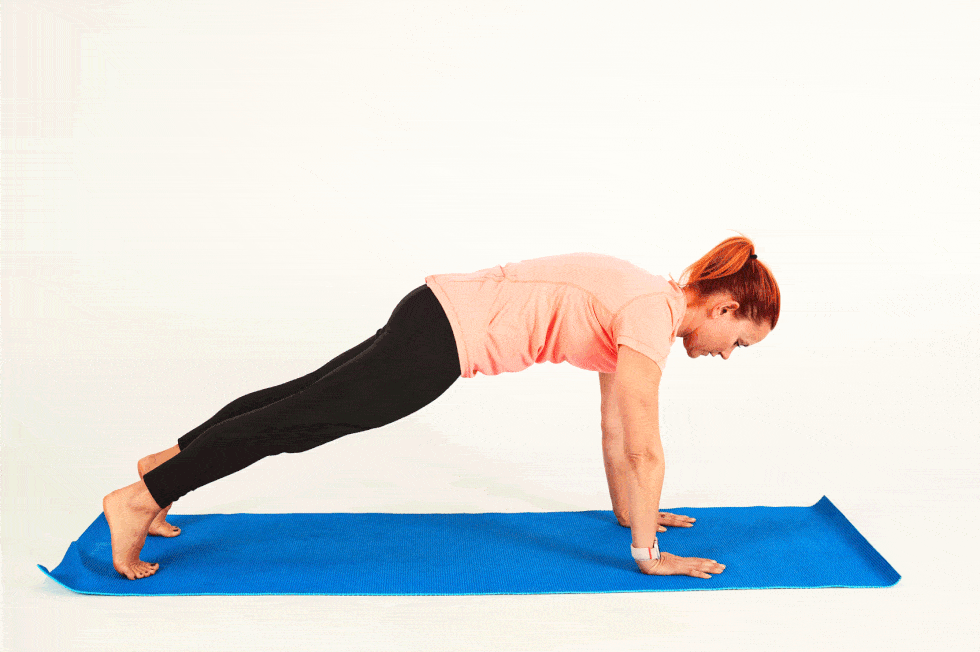
Trevor Raab
Why it works: This push-up variation strengthens the serratus anterior muscle (which connects your shoulder blades to the rib cage) and improves scapular stability (i.e., stability of the shoulder blade).
How to do it:
- Start at the top of a push-up position, with arms straight.
- Keeping core engaged, lower slightly as you slowly slide shoulder blades toward each other. Maintain a straight line with the body.
- Push back up as shoulder blades move back outward to regular plank position.
- Repeat. Do 8-10 reps.
2. Bear Crawl
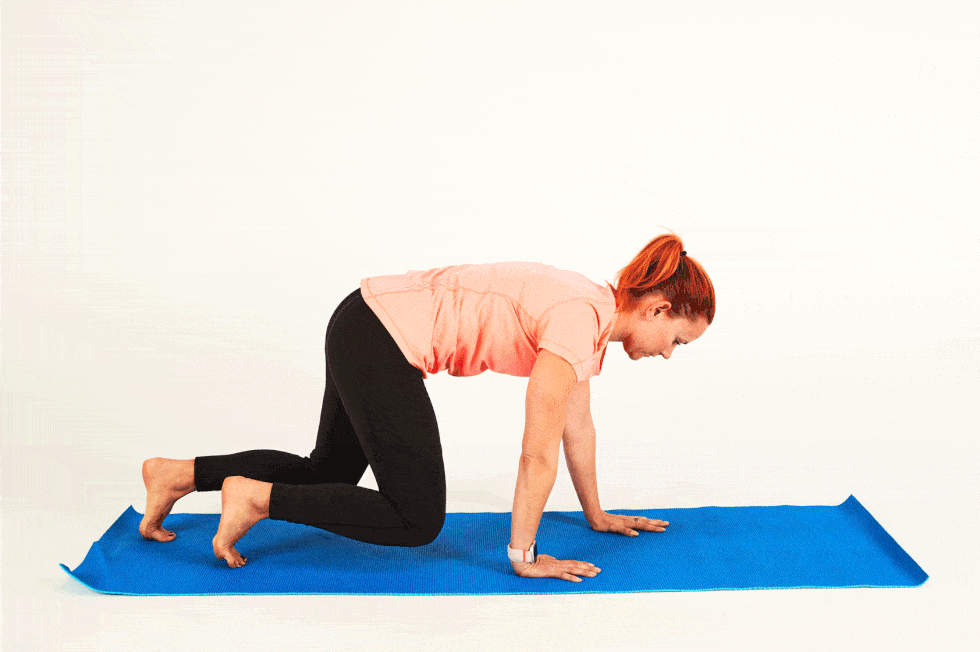
Trevor Raab
Why it works: Build strength and stability around the shoulder, while also improving your posture, spinal alignment, and core strength.
How to do it:
- Start on all fours with feet flexed and toes against floor. Press toes and hands evenly into floor and lift knees an inch or two off floor.
- Staying close to floor, move right hand and left leg forward.
- Repeat on opposite side.
- Continue alternating sides to crawl across floor for 45 to 60 seconds.
3. Y-W-T Raise
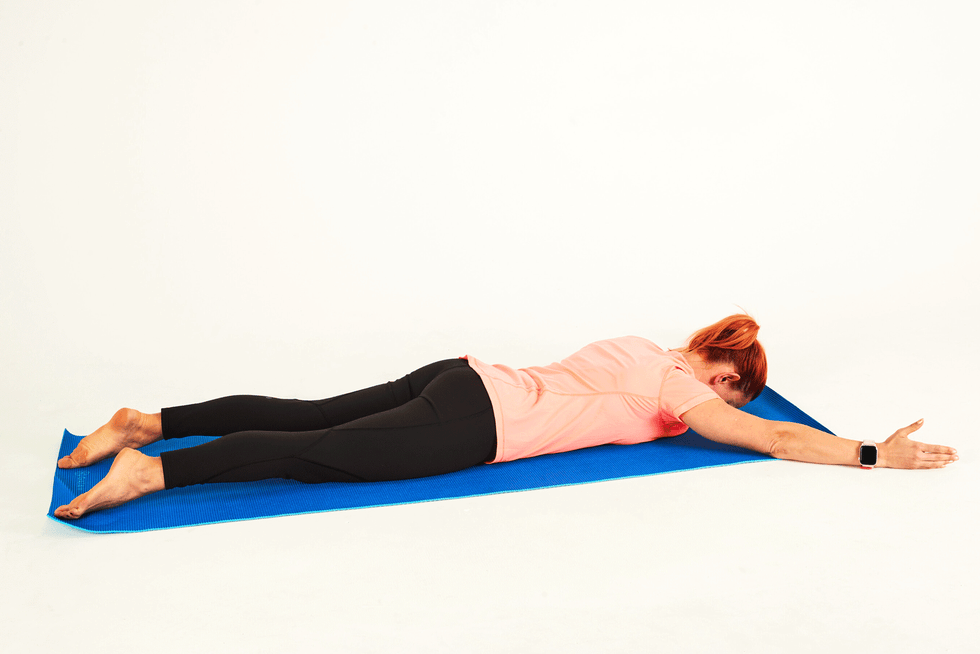
Trevor Raab
Why it works: This move is tougher than it looks and requires no weights to feel the burn. With it, you’ll strengthen the scapular muscles that support your shoulder joints and work on stronger posture by targeting the back of the upper body.
How to do it:
- Lie facedown on the floor, arms and legs extended. This is the starting position.
- Squeeze shoulder blades together and extend arms to 45-degree angle above head (so body forms a Y).
- Engaging core, lift upper body as high as possible, maintaining the Y position, and hold for a few seconds.
- Return to start. Repeat. Do 8-10 reps
- Then, bend elbows so arms form a W.
- Engaging core, lift upper body as high as possible, maintaining the W position, and hold for a few seconds.
- Return to start. Repeat. Do 8-10 reps.
- Then, extend arms out to sides so body forms a T.
- Engaging core, lift upper body as high as possible, maintaining the T position, and hold for a few seconds.
- Return to start. Repeat. Do 8-10 reps.
4. Wall Angel
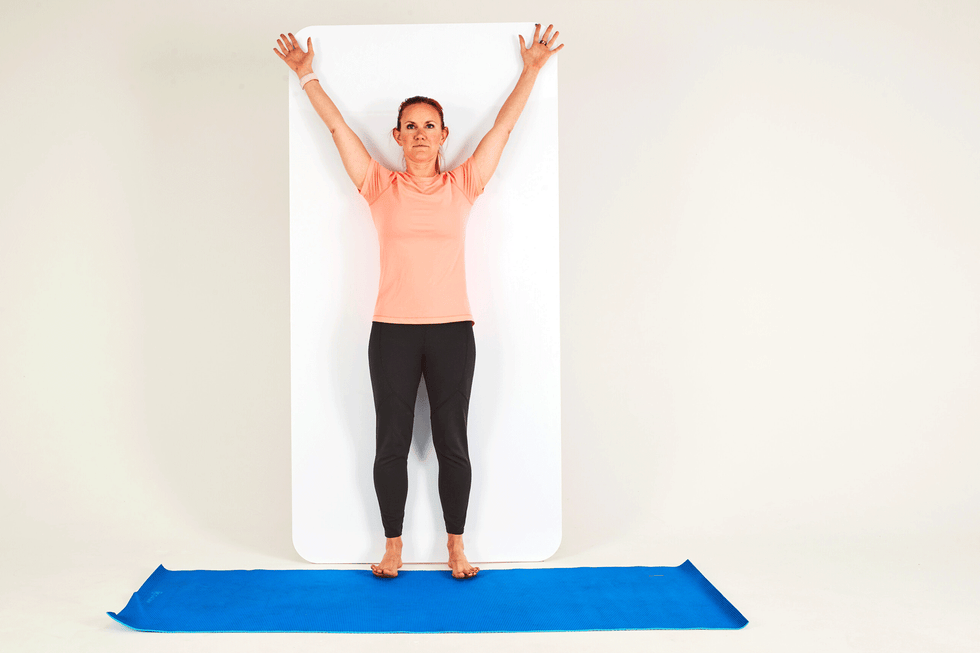
Trevor Raab
Why it works: This move stretches the chest muscles while helping you achieve optimal posture and working the shoulder joints through a full range of motion.
How to do it:
- Stand a few inches in front of a wall, facing away from it with glutes, shoulders, and head against it. Extend arms overhead to form a V against the wall.
- Slowly bend elbows and lower arms until hands are near shoulder height, keeping glutes, shoulders, head, and arms in contact with wall as you move.
- Slide arms back overhead into V shape.
- Repeat. Do 8-10 reps.
5. Thoracic Extension

Trevor Raab
Why it works: Improve movement in the thoracic spine, or upper back, and loosen the chest muscles with this foam roller exercise.
How to do it:
- Sit on floor with knees bent, and place a foam roller under upper back. Place hands behind head.
- Slowly lower head and shoulders over and behind the roller.
- Roll back up to start.
- Repeat. Do 5-10 reps.
- Roll slightly up or down the roller and repeat, avoiding the lower back.
6. Wheel Pose

Trevor Raab
Why it works: Loosen your pecs, T spine, and hips, while also strengthening your forearms in this inverted exercise.
How to do it:
- Lie faceup, knees bent and feet planted on floor. Place palms on floor by ears, fingers pointing toward shoulders.
- Press into feet to lift hips up, and press into hands to bring crown of head toward floor.
- Pressing into feet and hands equally, straighten arms and lift head off floor.
- Hold for 30 seconds
- Release and repeat 3 times.
7. Thread the Needle
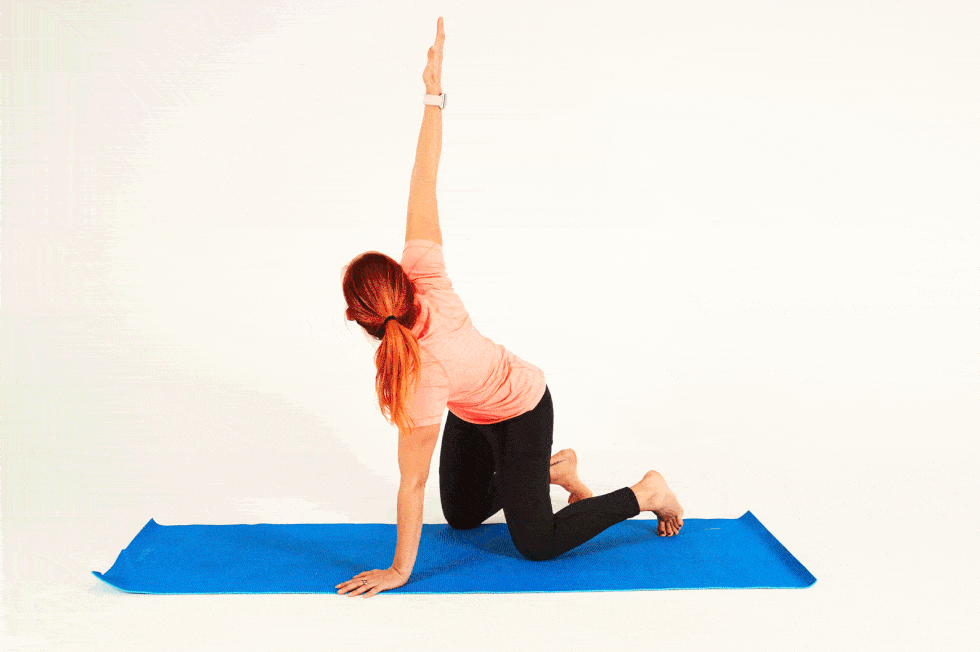
Trevor Raab
Why it works: To create mobility in the shoulders, you want mobility in the thoracic spine. This move works on rotation of the upper spine to offer relief for the neck, shoulders, and upper back.
How to do it:
- Start on all fours.
- On an exhale, lift right arm up and out to the side, extending arm and reaching it toward ceiling. Look toward arm as you move. This is the starting position.
- Then lower arm, extending it under torso and toward the left. Keeping hips high, but lower chest toward floor. Hold for at least 10 seconds.
- Return to starting position.
- Repeat. Do 5-10 reps.
- Repeat on opposite side.
READ MORE ON: injury management injury-prevention shoulder exercises shoulder mobility










